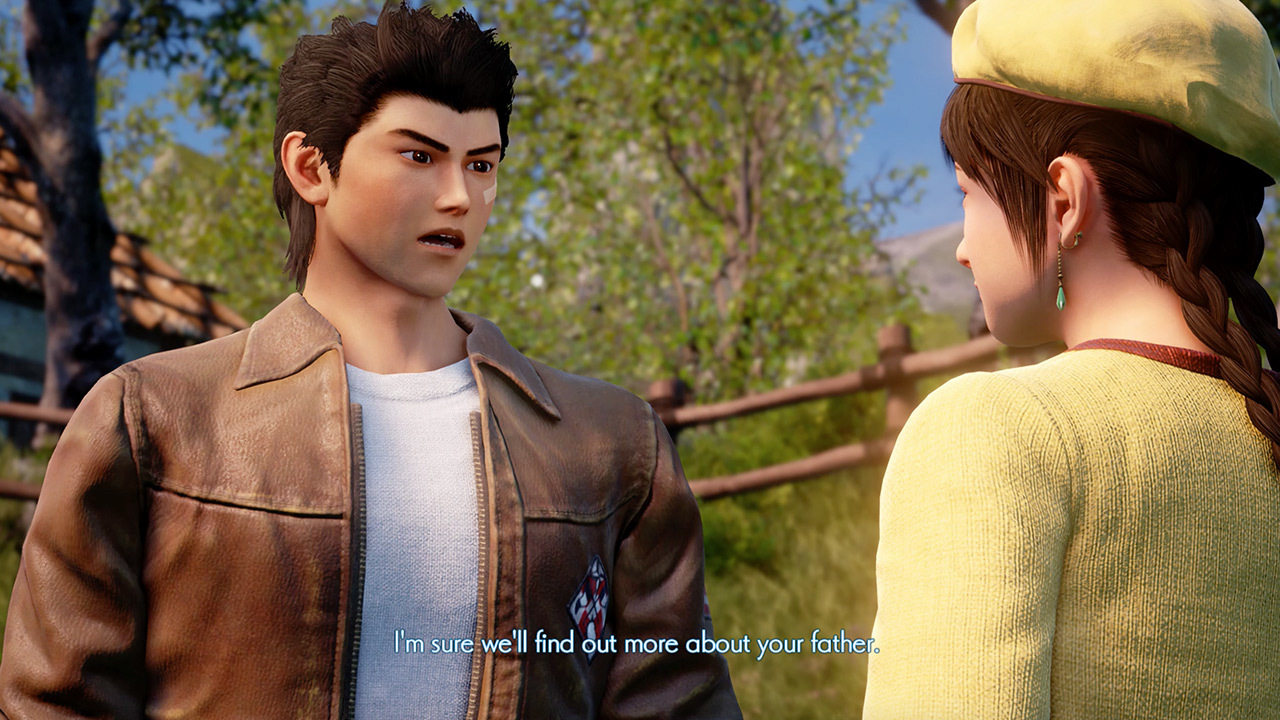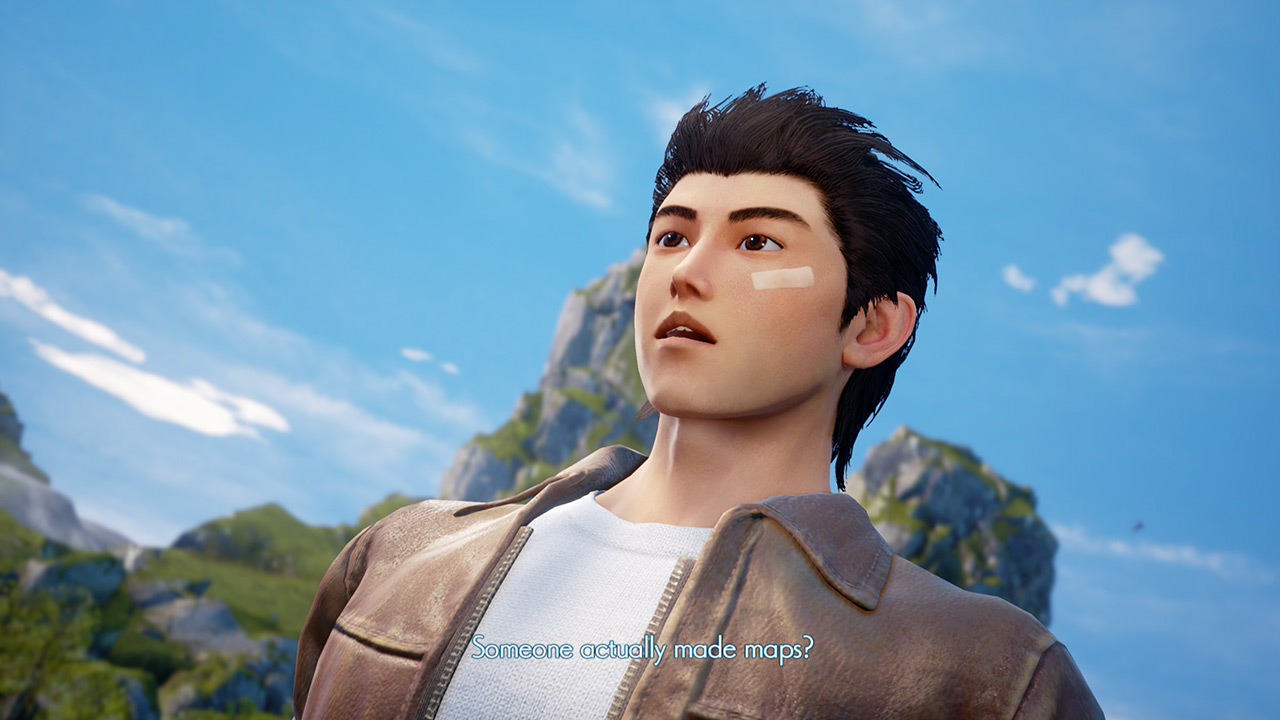Shenmue III is an anomaly, a game that feels like it doesn't really exist. It's as though it was beamed here from a parallel universe where the Dreamcast was an ongoing success and early-aughts game design remained the norm decades later. The truth is much more banal, of course: It's the result of a (sometimes rocky) crowdfunding campaign and the hopes and dreams of a fervent fanbase. Unfortunately, while it's fascinating as a weird curiosity from a long-gone era of gaming, it's simply not that fun to actually play.
Shenmue III picks up right where the last game left off--as though 18 years haven't passed since players wrapped up Ryo Hazuki's last adventure--resolving Shenmue II's cliffhanger in a way that's surprisingly unexciting after such a long stretch. Once that's over with, Shenmue III's story revolves around a small martial-arts village in the middle of China (and later, a larger harbor town), as he investigates various happenings, interacts with the populace, and engages in time-wasting activities like mini-games, gambling, scrounging for herbs, and levelling up his fighting skills. In other words, it's Shenmue.
In terms of setting, Shenmue III succeeds quite admirably in making the world pleasant to be in. There are some gorgeous vistas both in and outside of Bailu village, making the day-to-day strolls warm and inviting. The village itself is a charming setting, too; it's filled with interesting landmarks that give it character, like a massive sunflower garden and a small collection of gambling facilities on the riverbed. Niaowu, the port city where the game's latter half takes place, also feels like a real and engaging place, with the massive variety of shops you'd expect from a trading city on the water. The characters who live in these places also give them a nice flavor; NPCs all look distinct, have individual quirks and personalities, and are easy to recognize--which is nice when you have to find and talk to specific people in the absence of quest markers.
Shenmue III retains a lot of old favorite activities from previous titles--collecting capsule toys, gambling with games like Lucky Hit and turtle races, simple arcade mini-games like whack-a-mole, and the all-important Shenmue staple of forklifting--while also introducing a handful of new activities. You can wander around the countryside looking for herbs, selling and trading sets for money and valuable scrolls that teach Ryo new attacks, or you can kill a few hours fishing and hope your day's catch will net you some money and a cool prize. If you need some fast cash, you can do manual labor and chop wood in a brief minigame. And if self-improvement is your goal, there's always spots to train and raise your martial arts proficiency.
Exploring all of the side activities and enjoying the atmosphere of the locations in Shenmue III is fun, but it highlights one of the game's biggest problems: How utterly boring and unengaging the main story is. Ryo is still a dull-as-dishwater character who we're told is motivated by a sense of vengeance and justice, but his wooden dialogue and complete lack of a personality totally undermine any sense of urgency or intrigue this ongoing martial-arts drama might have. It doesn't help that the main plot moves like molasses, often requiring repeated, tedious wandering and interaction to find the character or place you need to get a tiny sliver of information that moves the plot along ever-so-slightly and unnaturally gating you off from places.
For example, It takes hours to find a pair of thugs at the game's beginning that you probably could have chased down in minutes if you were allowed to enter the area they're in from the get-go. Usually games gate off areas in order to better pace out the narrative they're trying to tell, but nothing interesting happens in the hours between the game's beginning and the confrontation with the thugs. I found myself frequently opting to do everything except what I needed to do to advance the story, not because the mini-games were particularly amazing (though they are quite satisfying), but simply because the story itself was so unengaging that I preferred to spend my time doing practically anything else instead of moving it along.

It's not just the pacing of Shenmue III that's a holdover from the Dreamcast era, either. There's all sorts of mechanics that, seen through a modern lens, are downright nonsensical and only serve to make the game less fun. For example, there's the stamina system: Ryo has a stamina bar that continuously drains even if he does so much as stands around, falling significantly faster if you choose to do activities like training, working, or even just running to get to a place more quickly (since fast travel is limited). Ryo needs to eat constantly in order to refill it throughout the day, and woe be to you if you stumble into a fight with less-than-ideal stamina, since it doubles as your life bar. In a game where exploration is a focus, it's a baffling mechanic that only frustrates.
Then there's the dialogue, which is every bit as unnatural and awkward as it was in previous games. If for some reason you find yourself in a conversation you didn't want to be in, you can't just cancel or even button-mash out of it--you're going to have to listen to someone babble on until Ryo clumsily apologizes for bothering them and escapes. Since you're often in situations where you have to bother everyone you see to find a person with the info you need, you're going to hear a lot of pointless blather. While there are some fun characters with cute personality quirks that are entertaining to engage with, a lot of the dialogue seems like banal filler meant to make conversation seem substantial when it really isn't.

The worst element of Shenmue, however, continues to be the combat, which is every bit as clunky and unsatisfying as it was back in the Dreamcast days. You're forced into an awkward angle where it's hard to see everything around you (which is awful when you have more than one opponent), the button combinations needed to perform various skills don't flow together well, and it simply feels laggy and unresponsive as a whole. You can "cheat" somewhat and simply do training exercises to level up your strength and stamina if you want to struggle a bit less with fighting, but it still doesn't serve to make the combat itself any more fun.
Shenmue III has its moments. It delivers on the promise of creating interesting and engaging new environments for Ryo and friends to explore and play around in. Yet, I can't help but think that the game's dogged determination to retain the same "feel" of its Dreamcast ancestors at any cost hurts it immensely. The creative team seems determined to not move anything forward substantially when it comes to Shenmue--including the story, which ends on yet another unfinished cliffhanger. Shenmue III is certainly an interesting game thrown out of time, but that doesn't mean that it's always enjoyable to play.









